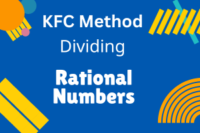What is Fraction: Types, Examples, Parts, Uses of Fractions
Published: 16 Sep 2024
Fractions are used all the time in our daily lives. Fractions help us understand how to divide and share things.
If we share a tasty pizza with friends or divide the bill of this pizza with friends, the fraction is there to help us.
| Pizza Fraction: |
|---|
Two friends want to eat a pizza. One friend wants to eat 5 slices, and the other wants to eat 3 slices. How to divide the pizza among them? Solution:
|
What is a fraction?
In math, a fraction is an expression that shows splitting of a whole into equal parts. It consists of the numerator and denominator, separated by a fraction bar.
Fractions can represent various quantities, such as parts of an object, a group, or a number. Depending on the relationship between the numerator and denominator, they can be proper, improper, or mixed.
History of Fractions
The term “fraction” comes from the Latin word “fractio,” meaning “a breaking.” This shows the idea of splitting a whole into parts. This is what fraction represent.
Define Fraction
When one unit or whole quantity is divided into equal parts, all those parts are called fractions.
A fraction is a numerical value showing a portion of a whole or splitting a quantity into equal parts.
Fractions are defined as portions or sections of any quantity into equal parts.
- Fraction must always divide the whole into equally sized parts.
- The term “whole quantity” can refer to a region, numbers, values, objects, or a group of objects.
Meaning of Fraction:
When something is divided into equal parts, the number of parts taken makes a fraction. Fractions express parts of a whole, ratios, or comparisons between numbers. For example, in the fraction $ \frac{3}{4} $, $ 3 $ is the numerator, and $ 4 $ is the denominator, meaning three out of four equal parts are being considered.
Explanation of Fraction:
A fraction is a way to divide a whole into equal parts. It consists of a numerator and a denominator, where the numerator tells how many parts are being considered, and the denominator shows the total number of equal parts in the whole. Fractions can represent various quantities, such as parts of an object, a group, or a number. Depending on the relationship between the numerator and denominator, they can be proper, improper, or mixed.
Parts of a Fraction
A fraction is a mathematical expression representing dividing one quantity by another. It consists of two parts: the numerator and denominator, which are separated by a fraction bar.
Fraction Bar
The fraction bar is the horizontal line that separates the numerator (the top part) from the denominator (the bottom part) in a fraction. It indicates division, showing that the numerator is divided by the denominator.
Numerator:
The upper part of the fraction indicates the portion/section of a fraction.
Denominator
The lower part of the fraction indicates the whole part of a fraction.
Types of Fractions
Proper Fraction
In a proper fraction, the denominator is smaller than the denominator.
General Form
$ \frac{a}{b} $ where $ a < b $
Example of Proper Fractions:
$ \frac{3}{4} $
$ \frac{3}{5} $
Improper Fraction
In an improper fraction, the numerator is greater than or equal to the denominator.
General Form
$ \frac{a}{b} $ where $ a \geq b $.
Example of Improper Fractions:
- In $ \frac{5}{3} $, the numerator is greater than the denominator.
- In $ \frac{7}{7} $, the numerator and denominator are same.
Mixed Fraction
In a mixed fraction, a whole number is combined with a proper fraction.
Example of Mixed Fractions:
$ 7 \frac{1}{2} $
$ 2 \frac{1}{3} $
Unit Fraction
In Unit Fraction, the numerator is always 1.
Example:
$ \frac{1}{6} $
Like Fractions
In like fractions, all the fractions have the same denominator.
Examples of Like Fractions:
$ \frac{2}{9} $, $ \frac{7}{9} $ and $ \frac{5}{9} $ are like fractions because 9 is the denominator of all three fractions.
Unlike Fractions
In unlike fractions, all the fractions have different denominators.
Example of Unlike Fractions:
$ \frac{3}{4} $ and $ \frac{2}{7} $ are unlike fractions because they have different denominators.
Equivalent Fractions
In equivalent fractions, different fractions represent the same value.
For example, $ \frac{1}{2} $ and $ \frac{2}{4} $ are equivalent fractions because they both represent the same portion of a whole.
Example of Equivalent Fractions:
$ \frac{1}{2} $ and $ \frac{2}{4} $
$ \frac{15}{10}=\frac{9}{6}=\frac{3}{2} $
Different Ways to Represent Fractions
There are various ways to represent fractions. Here are the five common ways to represent fractions:
1. Common Fraction (Vulgar Fraction)
A common fraction is a fraction that has a horizontal line between the numerator and the denominator.
Example:
$ \frac{3}{4} $
2. Mixed Fraction (Mixed Number)
A mixed fraction is a fraction that combines a whole number with a proper fraction.
Example:
$ 2 \frac{1}{3} $
3. Decimal Fraction
A fraction expressed in decimal form.
Example:
$ \frac{3}{4} =0.75 $
4. Percentage
A fraction expressed as a percent signifies “per 100.”
Example:
5. Ratio
A fraction in the form of a comparison between two similar quantities.
Example:
3:4 (equivalent to $ \frac{3}{4} $ )
Operation on Fractions
Addition of Fractions
- Make sure the denominators are the same. If they aren’t, make them the same or identical.
- Add the numerators and take the common denominator.
- Write the sum of the numerators over the common denominator.
- Simplify the fraction (if possible).
Examples:
| Addition of Like Fractions |
|---|
Add $ \frac{7}{8} + \frac{3}{8} $ |
| Addition of Unlike Fractions: |
|---|
Add$ \frac{7}{8} + \frac{5}{12} $ $ 2 \times 2 \times 2 \times 3=24 $ |
Subtraction of Fractions
- Make sure the denominators are the same. If they aren’t, make them the same or identical.
- Subtract the numerators and take the denominator common.
- Write the difference of the numerators over the common denominator.
- Simplify the fraction (if possible).
Example
| Subtraction of Like Fractions |
|---|
Simplify: $ \frac{7}{8} – \frac{3}{8} $ Solution: |
| Subtraction of Unlike Fractions |
|---|
Simplify: $ \frac{7}{8} – \frac{5}{12} $ $ 2 \times 2 \times 2 \times 3=24 $ |
Multiplication of Fractions
- Simplify the fraction to its lowest form, if necessary.
- Multiply all the numerators of the fractions.
- Multiply all the denominators of the fractions.
- Reduce the fraction to its lowest form if possible.
Examples
| Multiplication of Fractions |
|---|
|
Division of Fractions
Steps to Divide Fractions:
- Find the Reciprocal: Reverse the second fraction by switching its numerator and denominator.
- Change Division to Multiplication: Replace the division sign with multiplication, then multiply the first fraction by the reciprocal of the second.
- Multiply the Numerators and Denominators: Multiply the numerators together and the denominators together as per Multiplication Rules.
General Form
$ \frac{a}{b} \div \frac{c}{d} = \frac{a}{b} \times \frac{d}{c} $
Example:
| Division of Fractions |
|---|
Example: |
Example of Fractions in Real Life
Here are some practical applications of fractions in everyday life:
- Cooking and Baking
- Construction and Carpentry
- Time Management
- Finance and Money
- Education and Grading
- Sports and Statistics
- Shopping and Discounts
- Maps and Scale Models
- Dividing Property or Resources
- Music and Rhythm

- Be Respectful
- Stay Relevant
- Stay Positive
- True Feedback
- Encourage Discussion
- Avoid Spamming
- No Fake News
- Don't Copy-Paste
- No Personal Attacks



- Be Respectful
- Stay Relevant
- Stay Positive
- True Feedback
- Encourage Discussion
- Avoid Spamming
- No Fake News
- Don't Copy-Paste
- No Personal Attacks





